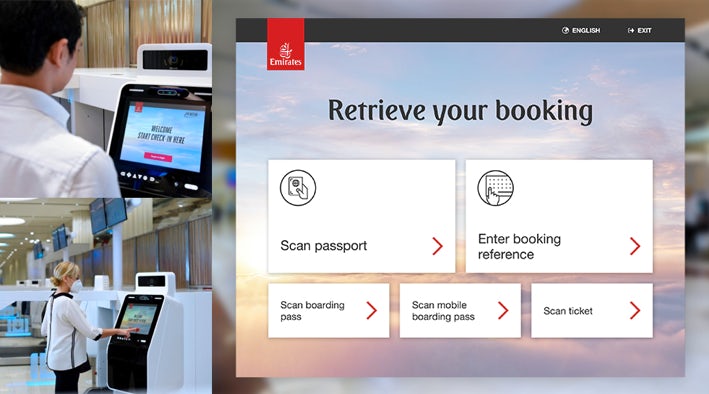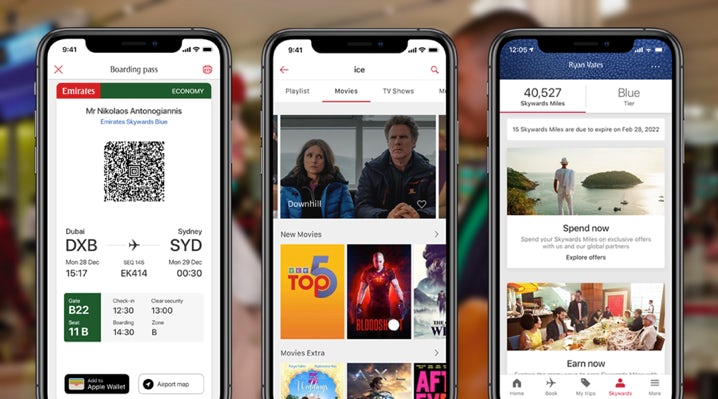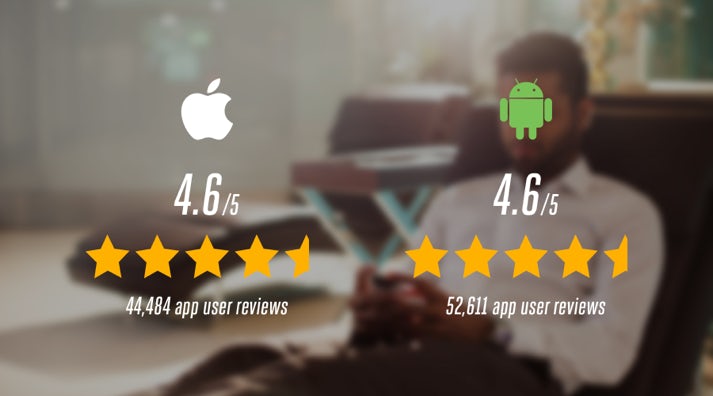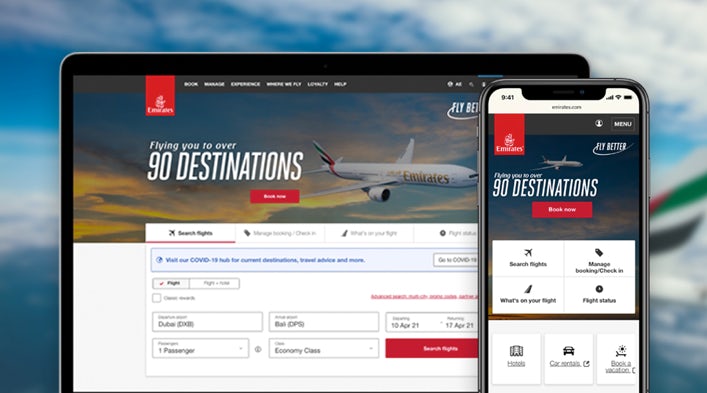Since 2015, we have been strengthening our in-house User Experience and Analytics capabilities within the Brand & Marketing Team at Emirates. In 2018, we transitioned to a fully inhouse UX/UI Design team which had previously been sourced from an external agency.
This in-house expertise of UX & UI Designers and UX Researchers now complements the in-house Digital Product Managers and Agile Development Squads, giving Emirates full control over the creation of best-in-class digital customer experiences.
With the support of a coherent design system and by placing customer feedback and regular usability testing at the heart of our design process, we changed the internal mindset of the team from ‘project delivery’ to ‘customer first’.
Unfortunately, as a result of Covid-19, the size of our Digital Experience Team has been reduced. However, despite the challenging environment, Emirates’ ambition to have strong in-house talent capable of leading the aviation industry in the fields of User-Centric Design and Digital Product Management remains.
To show this, let’s take a look at three recent stand-out digital customer experiences that the team designed and implemented together with business stakeholders and our agile development squads:
The Emirates Self-Service Kiosks at Dubai Airport
In October 2020, Emirates introduced 48 biometric-enabled self-service machines at the economy check-in area at Dubai International Airport.
To enable a seamless and coherent user experience, the Digital Experience team designed the entire customer journey and user interface for these machines from start to finish, without needing to rely on the out-of-the-box software provided by the hardware vendor.
More than 600 screens were developed using the same Design System setup as for Emirates’ web and mobile channels. The new self-service kiosks allow customers to check in, select their seats, weigh and drop their bags, and print bag tags and boarding passes.
Our customers were involved throughout the design process from usability testing of initial prototype design concepts, which were then iterated upon based on their feedback, all the way to the final design execution.
So far, our new self-service kiosks have seen high adoption and received very complementary feedback from our customers.

People might say: “But why didn’t you just use the out-of-the-box’ software?”. The answer to this question is simple: “Because it is not customer centric enough.” At Emirates, we see our focus on truly customer-centric design as a key differentiator in delivering an enjoyable and seamless customer experience.
As part of our ‘contactless travel’ offering, we will also soon introduce functionality which will enable our customers to use these airport kiosks directly from their mobile devices.
The Emirates App

Airline apps have become an important travel companion for customers. As well as being able to complete flight bookings, trip management features before and while travelling have become very popular.
With more than 50% of all of Emirates’ check-ins being done online, our ability to provide ‘mobile-first’ trip management features plays an important role in our aforementioned mission to provide an enjoyable and seamless travel experience to our customers. In that context, we decided to re-think and re-design our mobile app in the most customer-centric way possible, even if that means going back to the drawing board and recreating entire process flows.
Through usability testing and close collaboration with colleagues from our Airport and Legal teams, we successfully re-designed the online check-in flow for the Emirates app. Our key objectives were to reduce the time needed to complete the check-in, to minimize the number of required clicks, and to pre-populate all customer data related fields for logged-in app users.
The result is a check-in experience via our app which can be completed in as little as six seconds.
A key ‘design’ difference between the Emirates app and other leading airline apps is that Emirates has made a conscious decision to make all important features available to our customers via one single app. While several other airlines offer separate apps to book flights, to view in-flight entertainment content in advance of the flight and to access frequent flyer account information respectively, the Emirates app combines all of these features, which is not only efficient but hopefully also enjoyable to use.
Via the ‘My trips’ tab, customers can select their seats, check in to their flight, view the dining menu for their flight, create a playlist of movies and TV shows to watch, add additional baggage, and more. Via the ‘Skywards’ tab, customers have easy access to their digital membership card, as well to relevant information, offers and guidance on how to spend and earn miles. They even have the option to buy additional miles, donate miles to charity, or bid on exclusive events and invitations via an auction.
The impacts of our efforts to design a truly user-centric, cutting-edge airline app is reflected in the steep increase we have recorded in monthly active app users (to ±2m pre Covid-19), as well as in the greatly enhanced communication capabilities we have established with our customers via app push notifications, which in turn has led to richer insights into our customer’s behaviors, allowing us to continue to iterate based on this feedback.

We plan to continue re-thinking and re-designing app features to add value for our customers ‘on the go’. Usability testing, design thinking, user behavior data analytics and app session replays are assisting us to identify further optimization opportunities.
The Emirates responsive web platform
The speed it takes to load a webpage is one of the most important factors for user satisfaction, conversion and customer goal completion.
With this in mind, we completely redesigned and rearchitected emirates.com to be mobile optimized and to load quickly, in particular on 3G and 4G networks. We applied new technologies and a number of recommendations from Google to radically improve our page load speeds making emirates.com one of the fastest sites in the airline industry.
The impact of our fast and mobile optimized website has been a -20% decrease in bounce rate and a significant increase in our web user rating, which is at an all-time high of 4.6/5.
Within our Digital Product Management and Design teams, we have achieved significant culture change in order to encourage and promote all teams to take a “mobile first” approach in everything they do, and to ensure that our customers who access our website from a mobile device will enjoy the best possible experience. Mobile has been a fast growth area for us, with over 60% of our website traffic now coming via mobile devices.

Looking ahead
We will continue optimising our existing digital experiences by applying a mobile-first mindset to everything we do, whilst building new and enhanced app and web features to transform and improve our customer’s travel experience.
UX analytics, A/B testing, customer feedback and usability testing will continue to play a big role in steering our design decisions.
In the coming months, we plan to introduce a new native app booking flow which is integrated with Google Maps as well as an end-to-end baggage tracking solution which customers will be able to access via the app. Enabling self-help during flight disruptions via mobile to enable passengers to change flight times, dates and/or destinations is another area we are focusing on.
We will also significantly increase the number of personalized customer experiences leveraging the Marketing Technology stack we have been building over the past few years, as well as our Google Cloud based Marketing Data Platform.
Our journey towards Digital Experience Excellence is propelled by our commitment to customer-centric design, and our mindset and ambition have no finish line.

A great example of methodically improving the user touchpoints through a series of individual tactical projects whilst at the same time working on the larger strategic project of changing the overall company attitude from project delivery to customer first. Well done Alex and its been a pleasure to be part of the Emirates UX / service design process.